Why you can trust Tom's Hardware
I’ve already mentioned the 34M2C7600’s lack of RGB sliders. Luckily, three of the color temp presets are close to the mark. There is a little upward potential, but by and large, this is an accurate monitor.
Grayscale and Gamma Tracking
Our grayscale and gamma tests use Calman calibration software from Portrait Displays. We describe our grayscale and gamma tests in detail here.
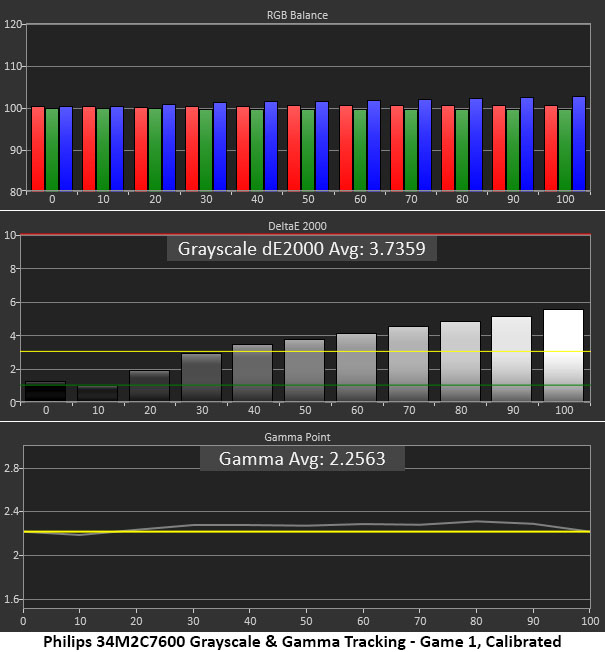
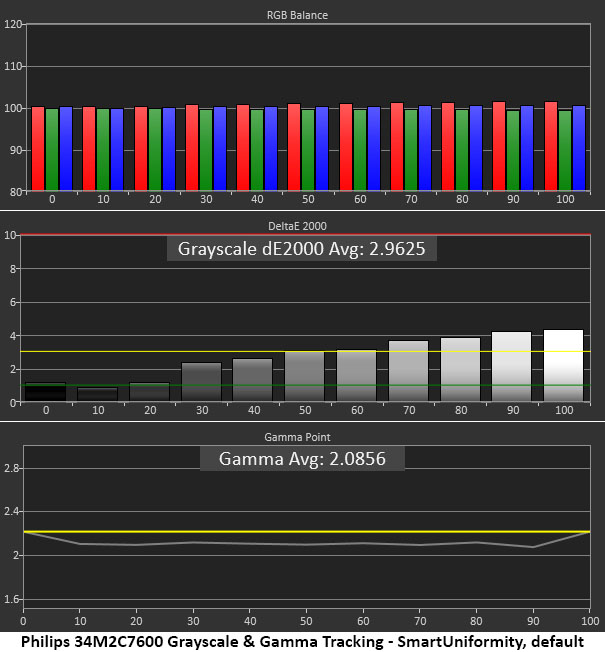
The RGB level chart shows only slight errors at 70% brightness and higher. Since it’s my business to nitpick monitors, I would like to adjust this issue away, but I can’t. However, for most users, there is no visual problem. The grayscale looks neutral, with only a slight warmth. Gamma is a tad light, but it is close enough to the mark for most users’ satisfaction.
Raising the setting to 2.4 improves the gamma and raises the blue levels a tad. Visually, the difference is tiny. It may seem that I’ve taken a step backward with a higher grayscale error, but in practice, anyone, including myself, would be hard-pressed to see a color shift in a side-by-side comparison of actual content. The better gamma is worth a slight compromise in grayscale accuracy.
Comparisons
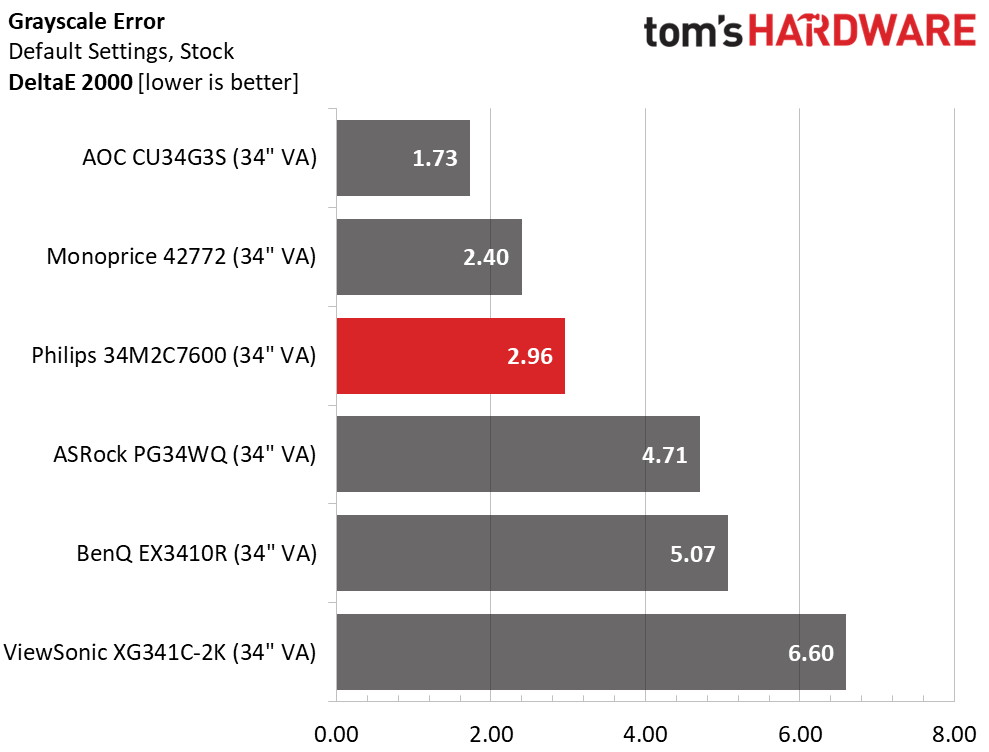
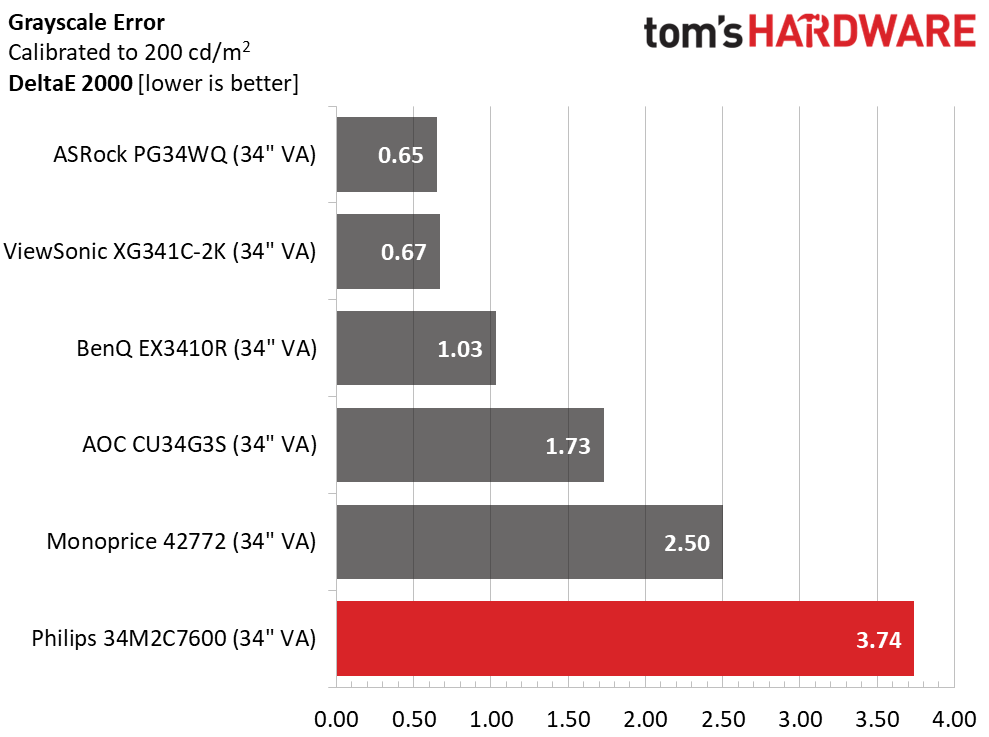
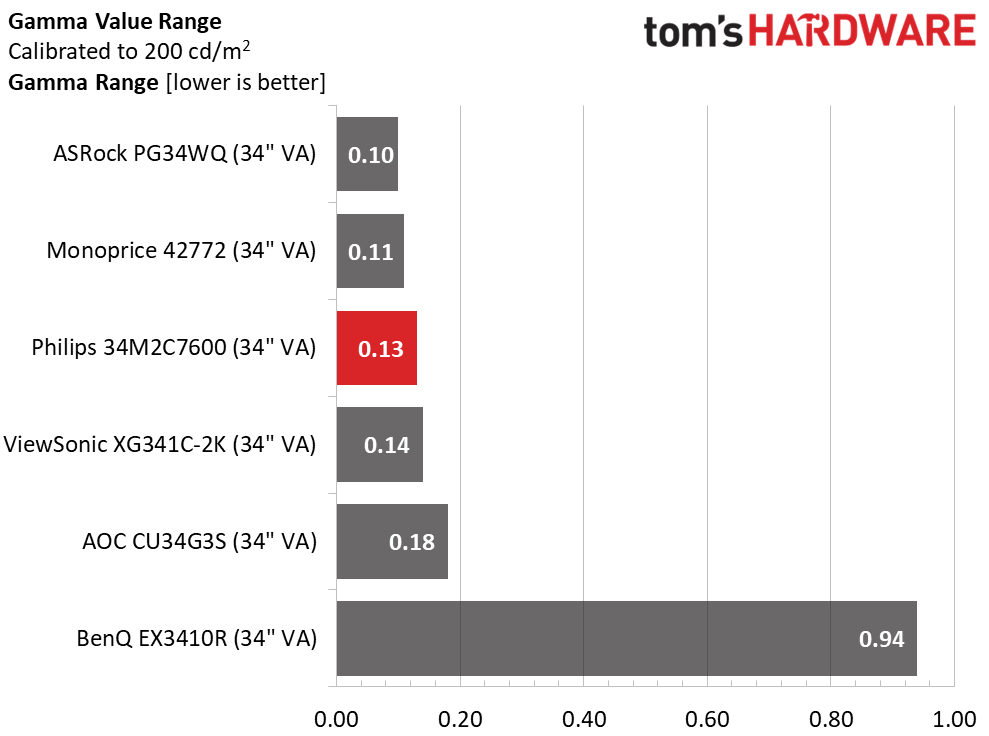
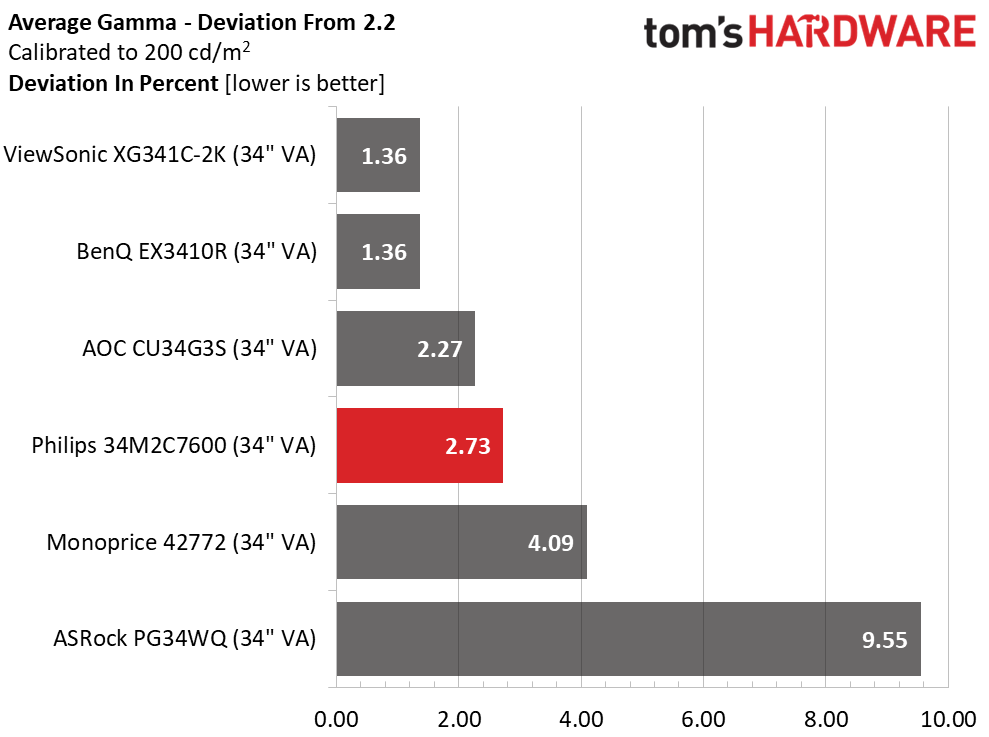
The 34M2C7600 starts in third place before calibration but slips to last after adjustment, thanks to the lack of RGB controls. This is unusual for Philips; I’ve always found adjustments in their other displays that delivered an improvement. But in the end, I was satisfied with the image. High color saturation and deep contrast more than account for a slight weakness in grayscale accuracy. Gamma performance is very good, with a slight advantage in image quality when the preset is on 2.4. So it compares well with the competition in that test.
Color Gamut Accuracy
Our color gamut and volume testing use Portrait Displays’ Calman software. For details on our color gamut testing and volume calculations, click here.
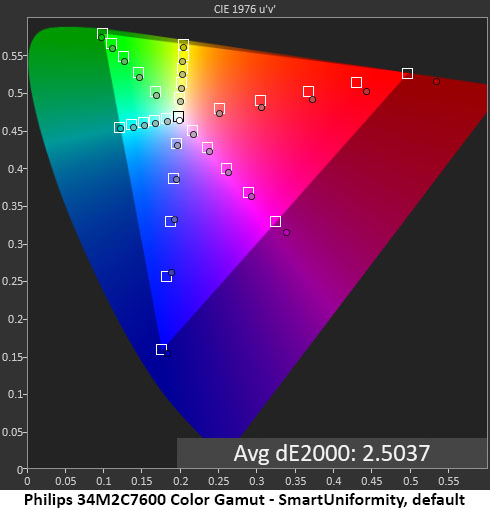
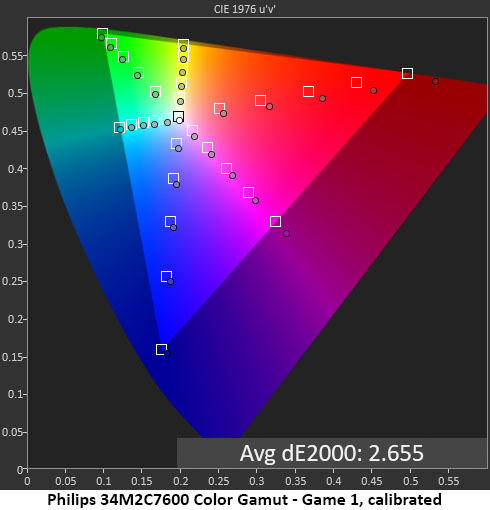
Color is an area where I have no complaints about the 34M2C7600’s performance. It covers a huge gamut with bonus red and almost the entire green primary, which is a rarity among wide gamut displays. Accuracy is high, with an average error of just 2.50dE. Calibration changes that to 2.66dE, which is an invisible difference. But I could just see the slight increase in red saturation, definitely a good thing.
Get Tom's Hardware's best news and in-depth reviews, straight to your inbox.
As stated earlier, though the OSD has an sRGB option, it doesn’t render that gamut. You’ll be viewing the 34M2C7600’s full native color space for all content, SDR and HDR.
Comparisons
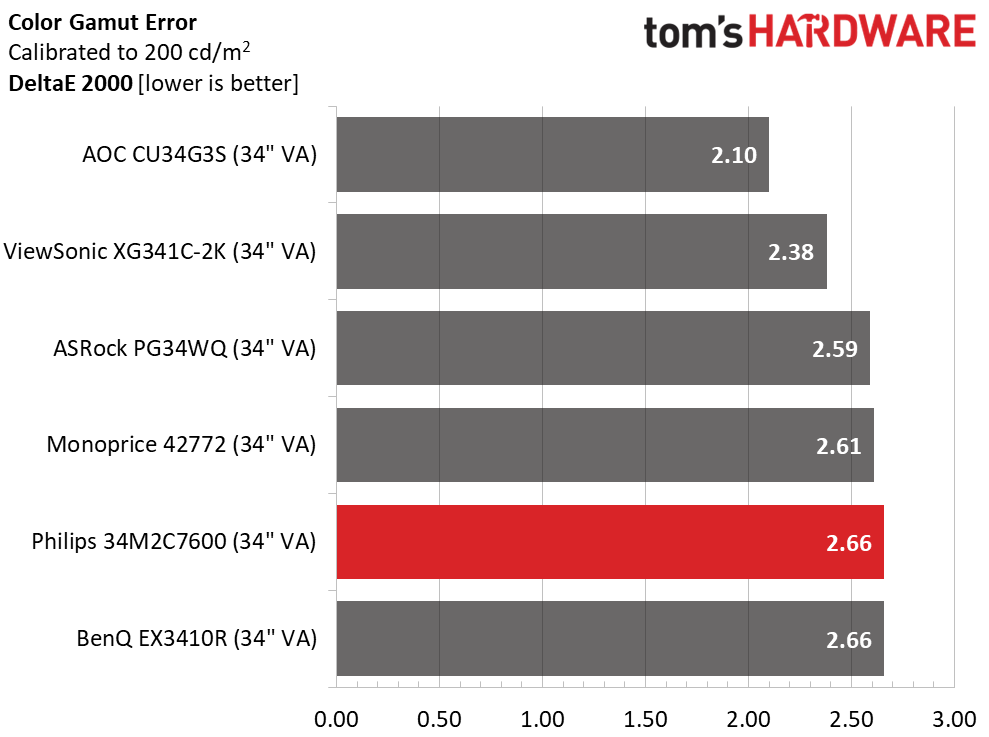
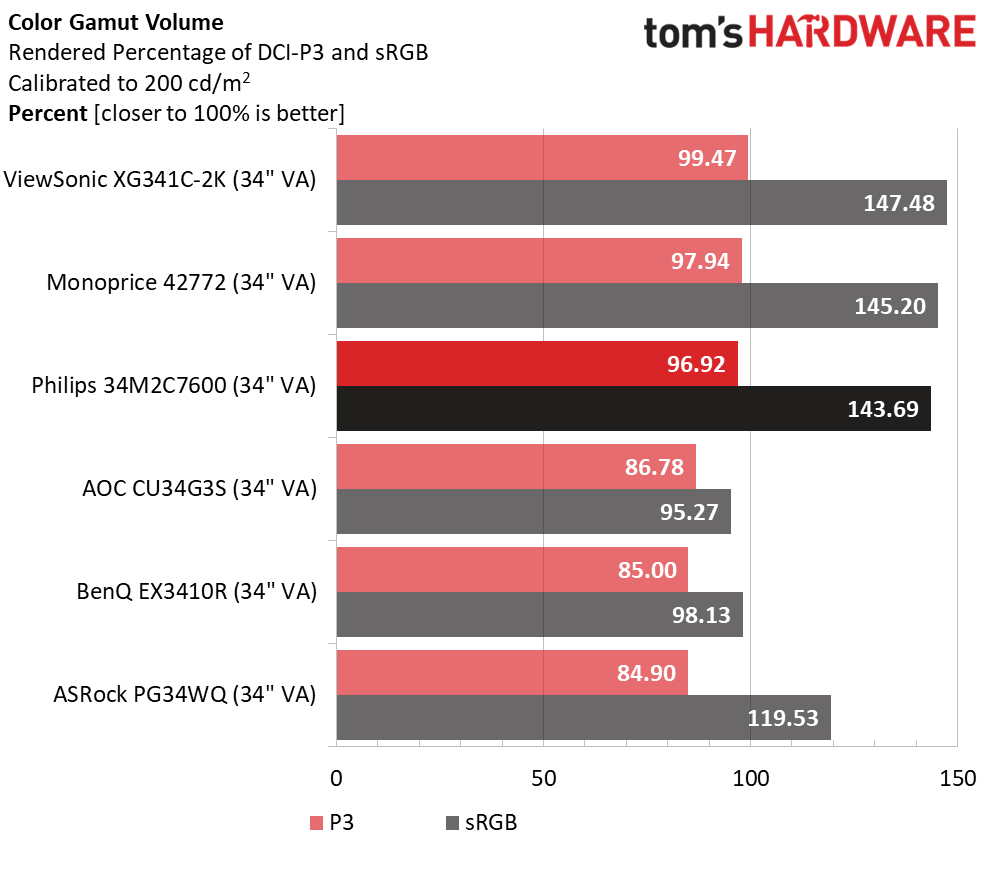
The 34M2C7600’s color accuracy is comparable to the other monitors. There is no visual difference in color accuracy, but you will notice the Philips’ extra color when compared to the AOC, BenQ and ASRock screens. Kudos to Monoprice for delivering high saturation without a premium backlight, but there’s no denying the advantage of the Mini LEDs in the Philips and ViewSonic panels. There is color aplenty here.
MORE: Best Gaming Monitors
MORE: How We Test PC Monitors
MORE: How to Buy a PC Monitor
MORE: How to Choose the Best HDR Monitor
Current page: Grayscale, Gamma and Color
Prev Page Brightness and Contrast Next Page HDR Performance
Christian Eberle is a Contributing Editor for Tom's Hardware US. He's a veteran reviewer of A/V equipment, specializing in monitors. Christian began his obsession with tech when he built his first PC in 1991, a 286 running DOS 3.0 at a blazing 12MHz. In 2006, he undertook training from the Imaging Science Foundation in video calibration and testing and thus started a passion for precise imaging that persists to this day. He is also a professional musician with a degree from the New England Conservatory as a classical bassoonist which he used to good effect as a performer with the West Point Army Band from 1987 to 2013. He enjoys watching movies and listening to high-end audio in his custom-built home theater and can be seen riding trails near his home on a race-ready ICE VTX recumbent trike. Christian enjoys the endless summer in Florida where he lives with his wife and Chihuahua and plays with orchestras around the state.
-
cknobman I have a hard time considering this when I can get a OLED version cheaper.Reply
If the display wasnt curved it might make a case for desktop and productivity use but thats not really the market this display is targeting. -
coloradoblah when will these ultrawide gaming monitors move on from 1440p? I dont need 4k but why not at least make a switch to 1600p from some 38” monitors, I like my 4 year old 34” 1440p monitor but i can see the pixels.Reply -
coloradoblah Reply
I use my curve for work, it took a little getting used to but as long as you arent doing graphic design stuff you can make it workcknobman said:I have a hard time considering this when I can get a OLED version cheaper.
If the display wasnt curved it might make a case for desktop and productivity use but thats not really the market this display is targeting. -
Alvar "Miles" Udell $1300? No thanks. There are better options that have better color accuracy, don't have a curved screen or VA panel, and cost under $1000.Reply -
alithegreat There should be a comment and comparison to aw3423dwf, which I guess is about 1100$.Reply -
MiniITXEconomy ReplyAlvar Miles Udell said:$1300? No thanks. There are better options that have better color accuracy, don't have a curved screen or VA panel, and cost under $1000.
Ugh, thank you so much, this was the info I was looking for... also, hell no, I ain't paying that much for this.
